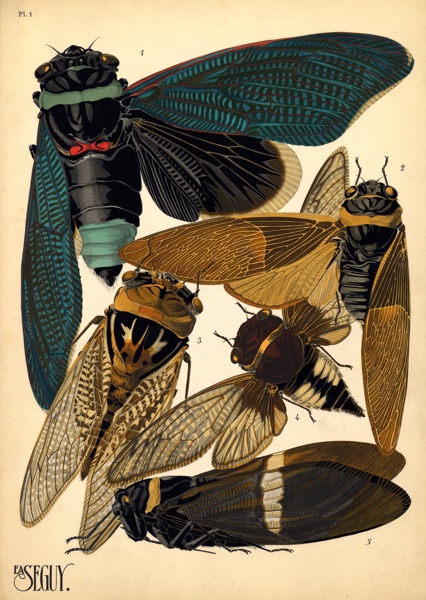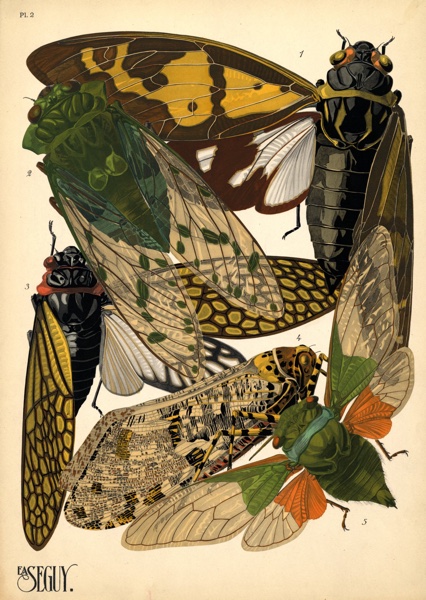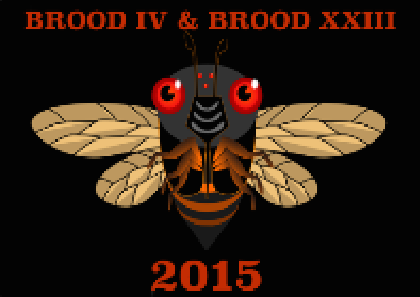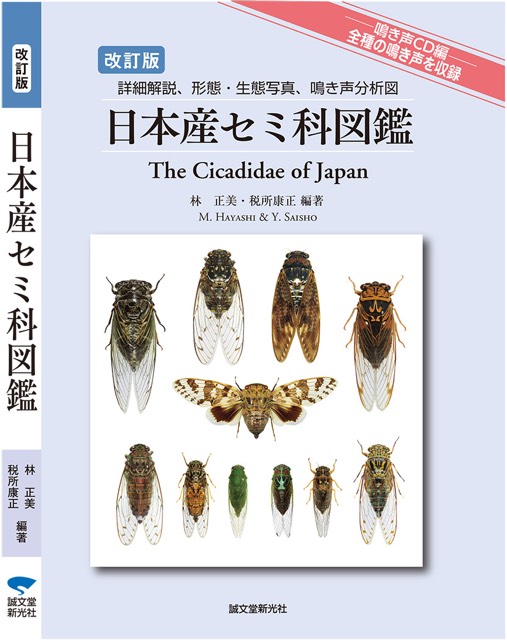The NCSU Libraries Rare and Unique Digital Collections website recently reminded the us of artist Eugene Alain (E.A.) Seguy’s insect illustrations. Seguy created these illustrations in the 1920’s, and as you might imagine, some of the cicada names cited in the notes for these illustrations have changed. Names typically change when cicadas are reclassified due to discoveries about their biology, or when we realize that someone else had actually named them earlier than the namer currently given credit.
Here are the two illustrations, the accompanying identification, and corrected identifications.
Illustration:
Accompanying identification:
1. Tacua speciosa. Indes; 2. Polyneura ducalis. Indes Or.; 3. Cicada saccata. Australie; 4. Cicada fascialis. Siam; 5. Tozena melanoptera. Indes Or.
Corrected or expanded identification:
- Tacua speciosa. This is correct, although there are two subspecies of T. speciosa, I’m going to guess it is Tacua speciosa speciosa (Illiger, 1800) based on the location.
- Polyneura ducalis. This is correct. Polyneura ducalis Westwood, 1840.
- Cicada saccata. This is now: Thopha saccata (Fabricius, 1803).
- Cicada fascialis. This is now: Cryptotympana facialis facialis (Walker, 1858). Update: David Emery says this might be a Cryptotympana acuta (Signoret, 1849).
- Tozena melanoptera. Close enough. Tosena melanoptera melanoptera (White, 1846). There are a few unnamed subspecies.
Illustration:
Accompanying identification:
1. Goeana festiva. Indes; 2. Zammara tympanum. Amérique du Sud; 3. Goeana ochracea. Indes; 4. Phenax variegata. Brésil; 5. Hemisciera maculipennis. Amazone
Corrected or expanded identification:
- Goeana festiva is actually Callogaeana festiva festiva (Fabricius, 1803).
- Zammara tympanum. This is correct. Zammara tympanum (Fabricius, 1803).
- Goeana ochracea is way off. It is a Talainga binghami Distant, 1890.
- Phenax variegata is not a cicada, is it a fulgoroid planthopper, but the id is correct.
- Hemisciera maculipennis is correct. Hemisciera maculipennis (de Laporte, 1832) aka the “Stop and Go” cicada, because its colors resemble the colors of a stop light.




